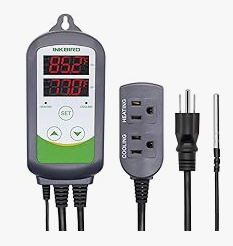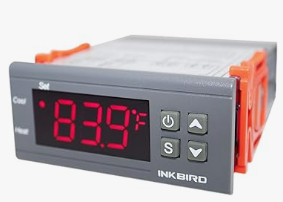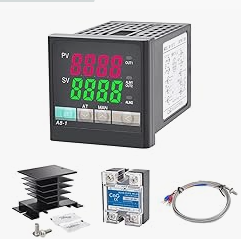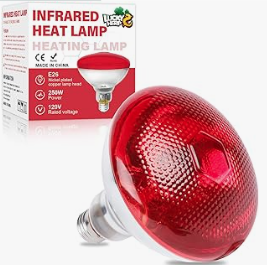Dry curing equipment setup
Humidity control, in my experience, is very critical to determine whether your salami process will fail or succeed. It is also a difficult thing to achieve with the tools available to the hobbyist attempting to build their own curing chamber.
Commercial curing equipment are available, some small enough to fit on you kitchen counter, that supposed to give you full control of both temperature and humidity. These, however, can cause a dent on your bank account, going from few hundred to thousands of dollars.
Being on the DIY side, I have been trying to build my own setup using mini fridges and so far, I have had limited success. I just finished building a new setup and will report back in a couple of weeks. The different thing about this last design is about the humidity control, more on this later.
For those starting to consider dry curing, I would recommend to get your setup built first, fine tune it to ensure that it delivers what you are aiming for in terms of temperature, humidity and air flow. The last thing you want is to have lots of meat ready to cure, to then realize that your system is not able to maintain the parameters that you need.
The following are the basic capabilities that I would consider for any setup:
- Hot stage: maintain temperatures in the range of 80F to 100F, for fermentation stages of curing, like in dry salami. Humidity control in this setup is not totally required, since you can maintain higher humidity by just wrapping the meat in clear film during fermentation (close to 100% RH). Also, precise control of temperature is not a big deal since most curing cultures will work just fine in a wide range of temperatures.
- Cold stage: maintain temperatures and humidity for the longer dry curing period, which can last several weeks to months. In this period, desired temperatures can be in the high 30's to low 50's and humidity in the range of 75% to 85% RH. This is when the trouble strikes, maintain both temperature and humidity in check, when these two variables are inter-dependent. Most controllers are either for temperature or humidity, less common to find a device that can control both simultaneously and even then, it just ignores the fact that controlling temperature affects the relative humidity, and the other way around.
- Air flow, internally and intermittent external air exchanges. This is not a major challenge since small fans can be used for internal flow and by just opening the chamber door every other day, one can provide the external fresh air needed.
The purpose of this step is to create the ideal environment for fermentation, where the curing cultures (good bacteria) will convert dextrose into lactic acid, dropping the PH and stopping bad bacteria from developing. The recommended target PH during fermentation is <5.3, before you can move the meat into the cold stage curing.
- Bactoferm T-SPX: 64-75F (dry salami)
- Bactoferm FRM-52: 72-90F (medium-diameter salamis and other dry, fermented sausages)
- Bactoferm HPS: above 90F (whole muscle)
- Think about how big the chamber needs to be, so you can fit the meats that you are curing, or plan to cure in the future, with plenty of space to add some additional equipment inside, like a humidifier and or dehumidifier.
- Any closed space can be turned in a curing chamber, ideally an insulated box, like a cooler or something that you can build cheap. Even a large cardboard box can be used. Building an insulated box is also not complicated, for example, cutting and hot-gluing 1in XPS (extruded polystyrene) boards together from Home Depot, Lowes, etc.
- Get a temperature controller or an all-in-one mini electric heater, something cheap and easy to use. This selection depends on how comfortable you are with connecting wires and doing electric work. There are many options online, a few listed below:
- All in one systems: These plug directly into an regular wall outlet and although I have not used these, seems like a straight forward and cheap way ($26 i Amazon)
- Plug and Play temperature controllers: The variety of devices available is immense, and can also be a cheap option. For the most part, these also plug in a regular power outlet and switch on-and-off a power output for an external heater, or cooler device. The external heating device can be as simple as a regular light bulb, an infra-red bulb, or a heating element powered with 120vAC. Unless you plan to have the hot chamber in a location with ambient temperatures above the range that you need, cooling is usually not required. Adding a cooling device to a chamber can be tricky and for the most part, a minifridge is turned into the chamber, a more expense project. Below are few examples of these types of controllers and option for the heating elements, all found at Amazon or other online stores.
- Panel mounted controllers: These require some wiring, so may not be for every hobbyist.









No comments:
Post a Comment